Title
RenaissanceDuration
25 October 2020 to 29 November 2020Venue
Schönfeld ProjectsOpening Hours
Sat 2 p.m.–6 p.m. and by appointmentLocation
Telephone
+32 478 20 25 82| Detailed Information | |||||
|---|---|---|---|---|---|
| Title | Renaissance | Duration | 25 October 2020 to 29 November 2020 | Venue | Schönfeld Projects |
| Opening Hours | Sat 2 p.m.–6 p.m. and by appointment | Location |
120 Mechelsesteenweg 2018 Antwerpen
Belgium | Telephone | +32 478 20 25 82 |
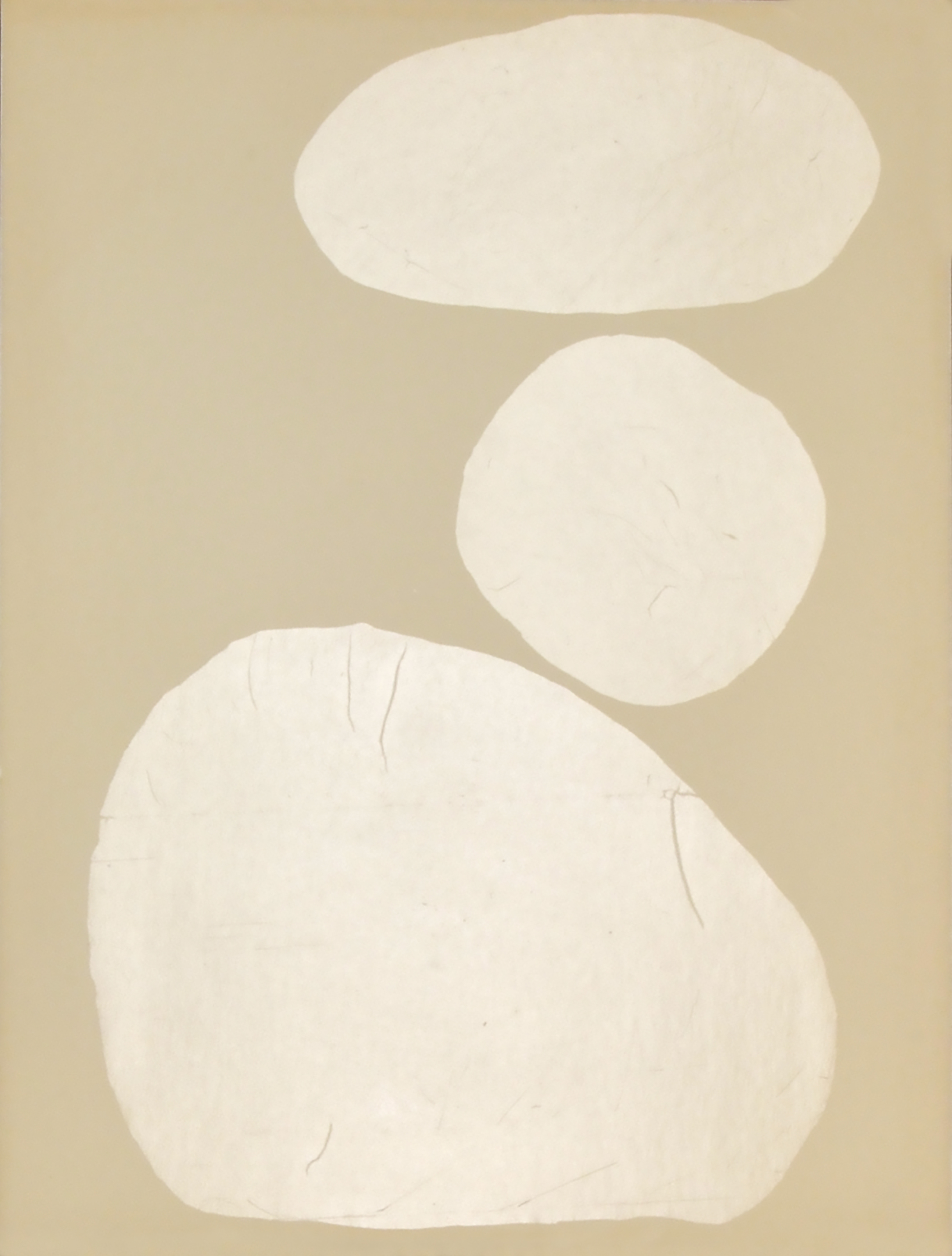
Babs Decruyenaere, Abstraction of a Memory 2.
Photo: Babs Decruyenaere
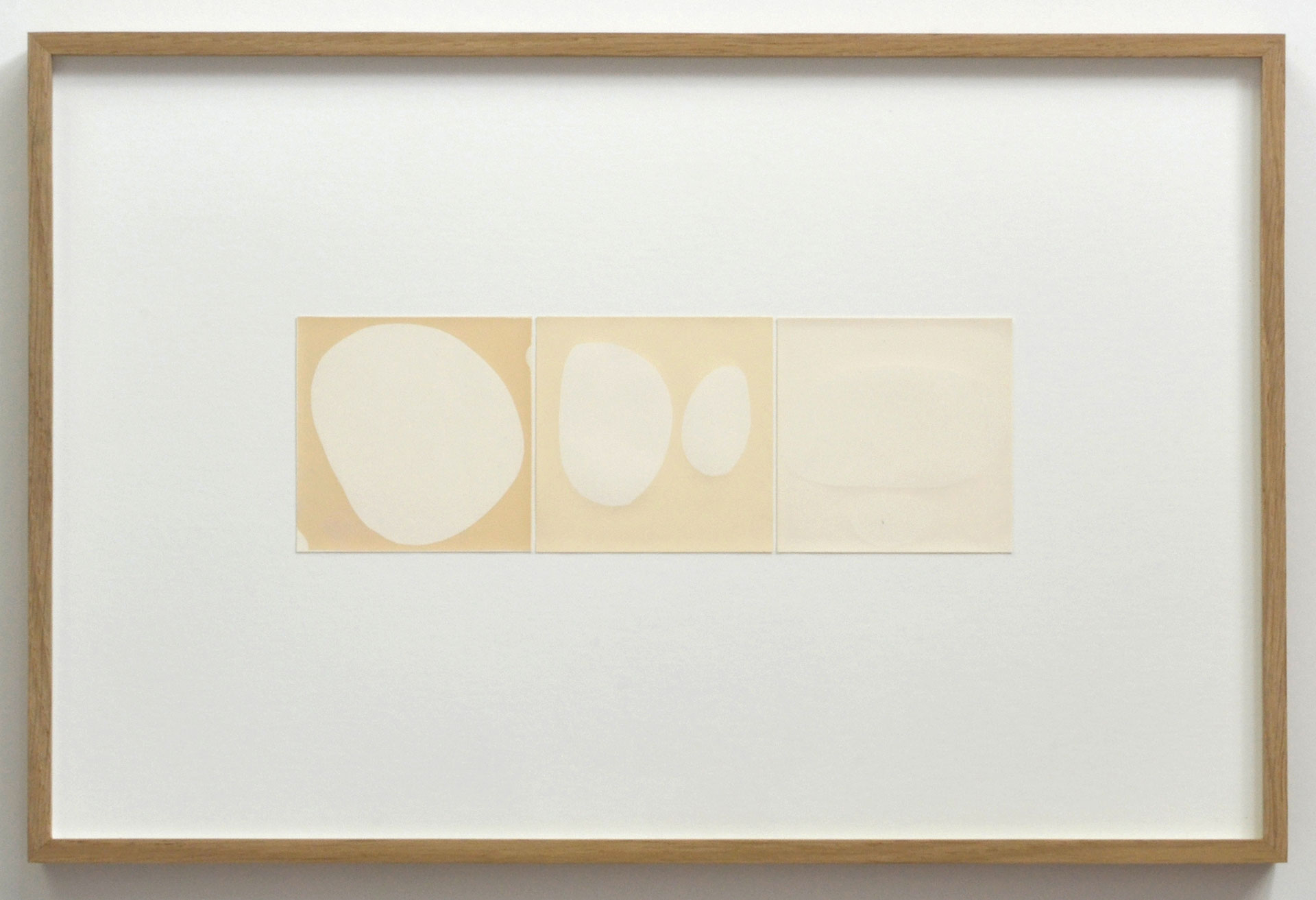
Babs Decruyenaere, White Pebbles
Photo: Babs Decruyenaere
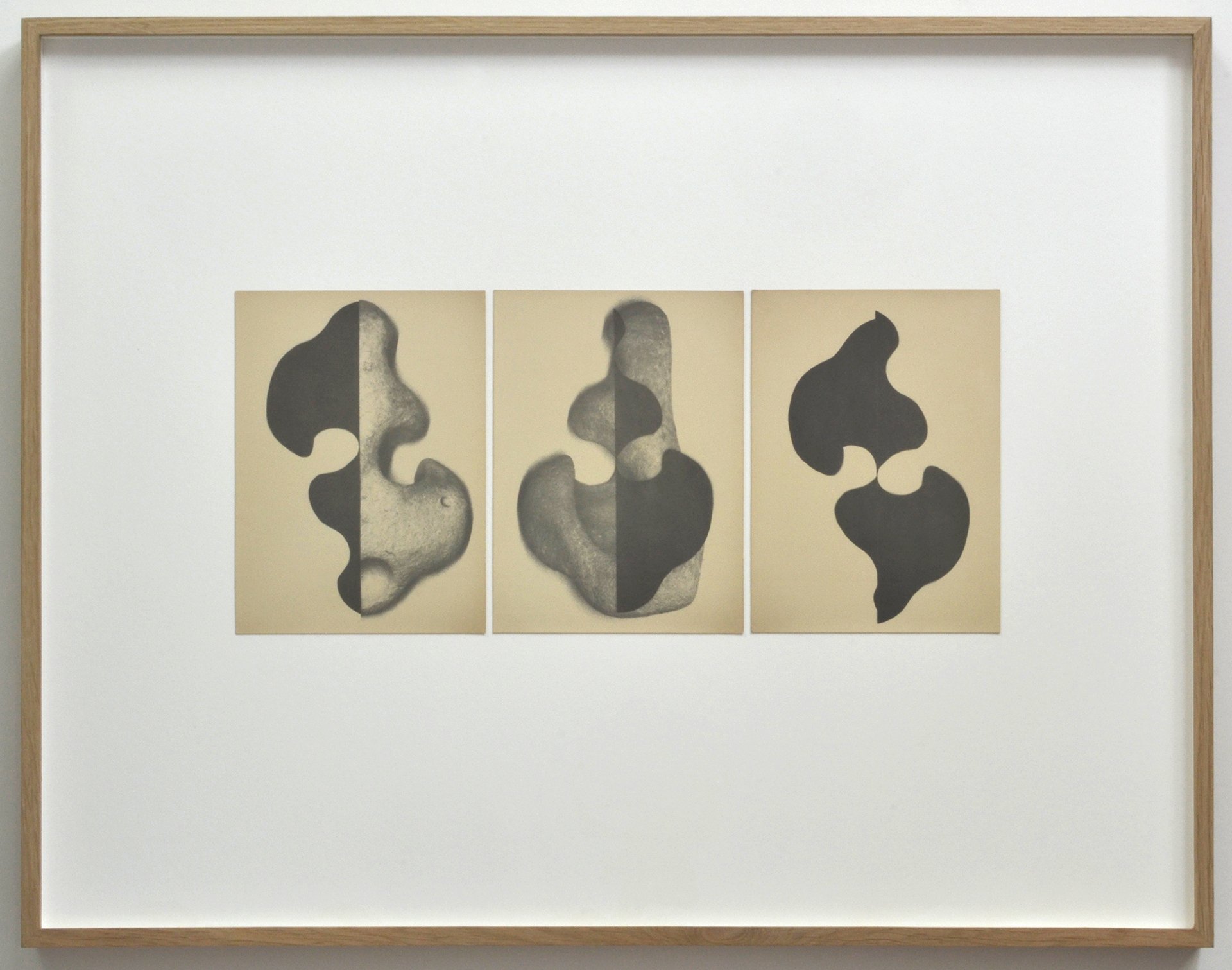
Babs Decruyenaere, Because I Have Faith in You
Photo: Babs Decruyenaere
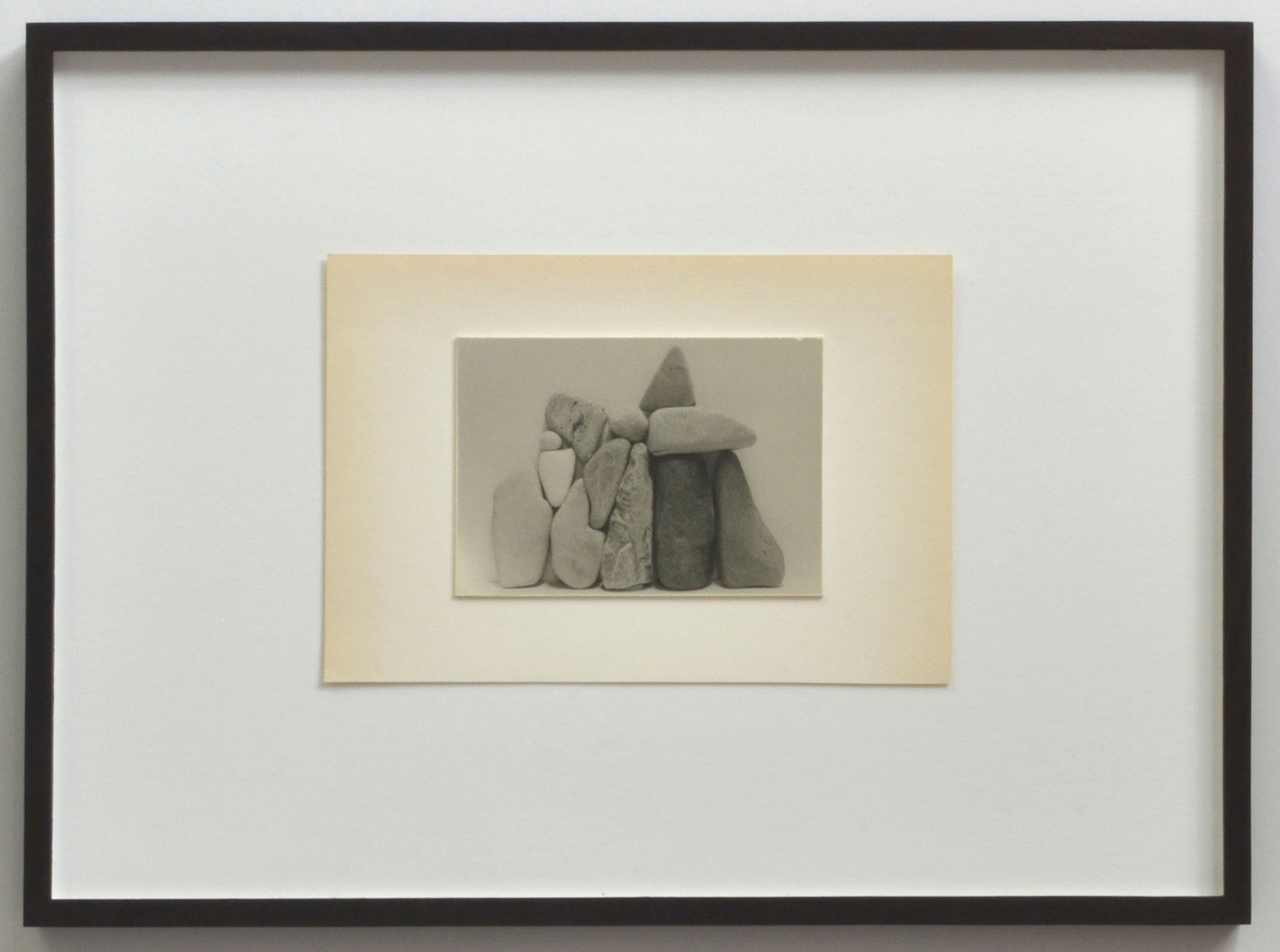
Babs Decruyenaere, Building Up Walls I
Photo: Babs Decruyenaere

Babs Decruyenaere, Builing Up Walls II
Photo: Babs Decruyenaere
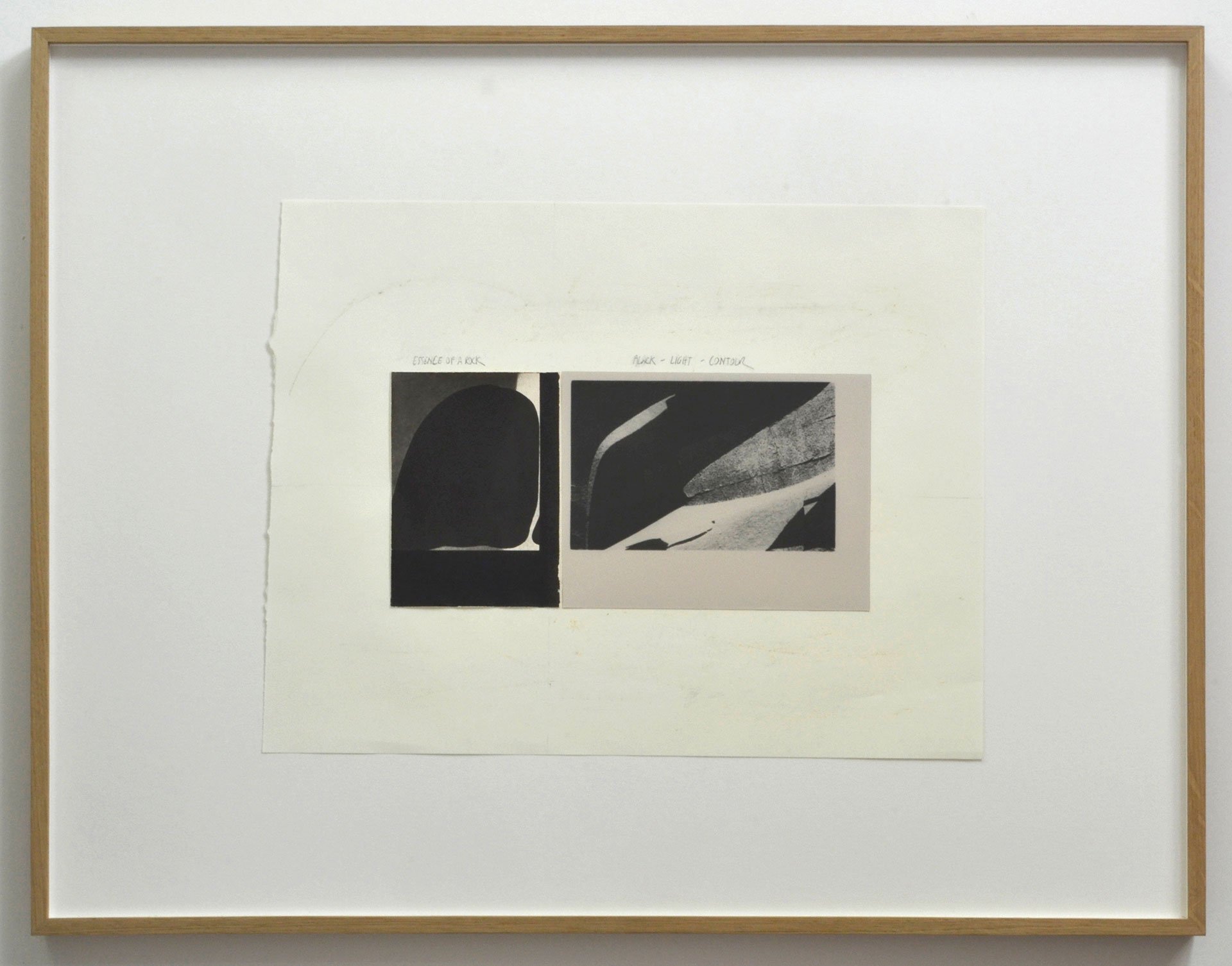
Babs Decruyenaere, Essence Of A Rock
Photo: Babs Decruyenaere
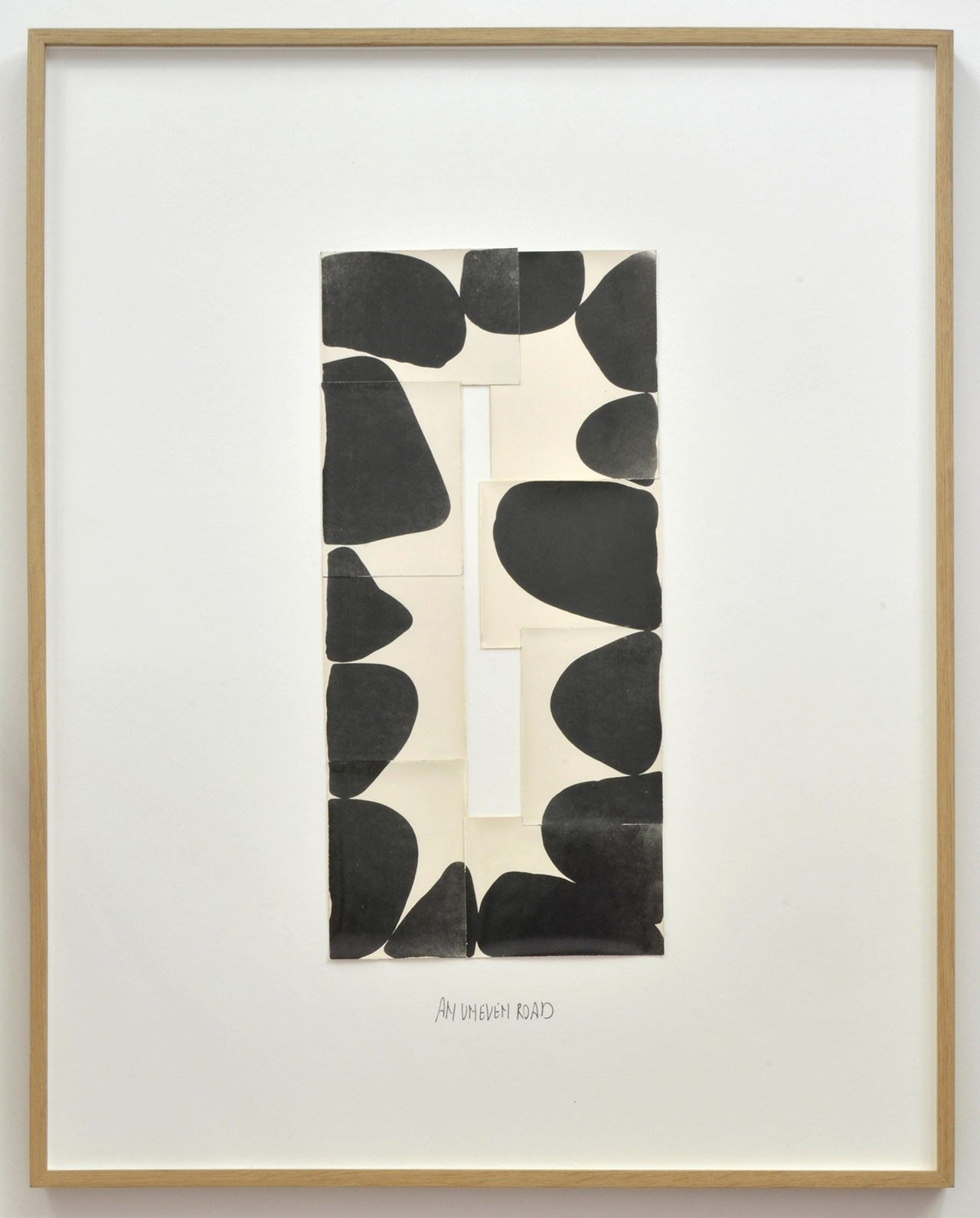
Babs Decruyenaere, An Uneven Road
Photo: Babs Decruyenaere
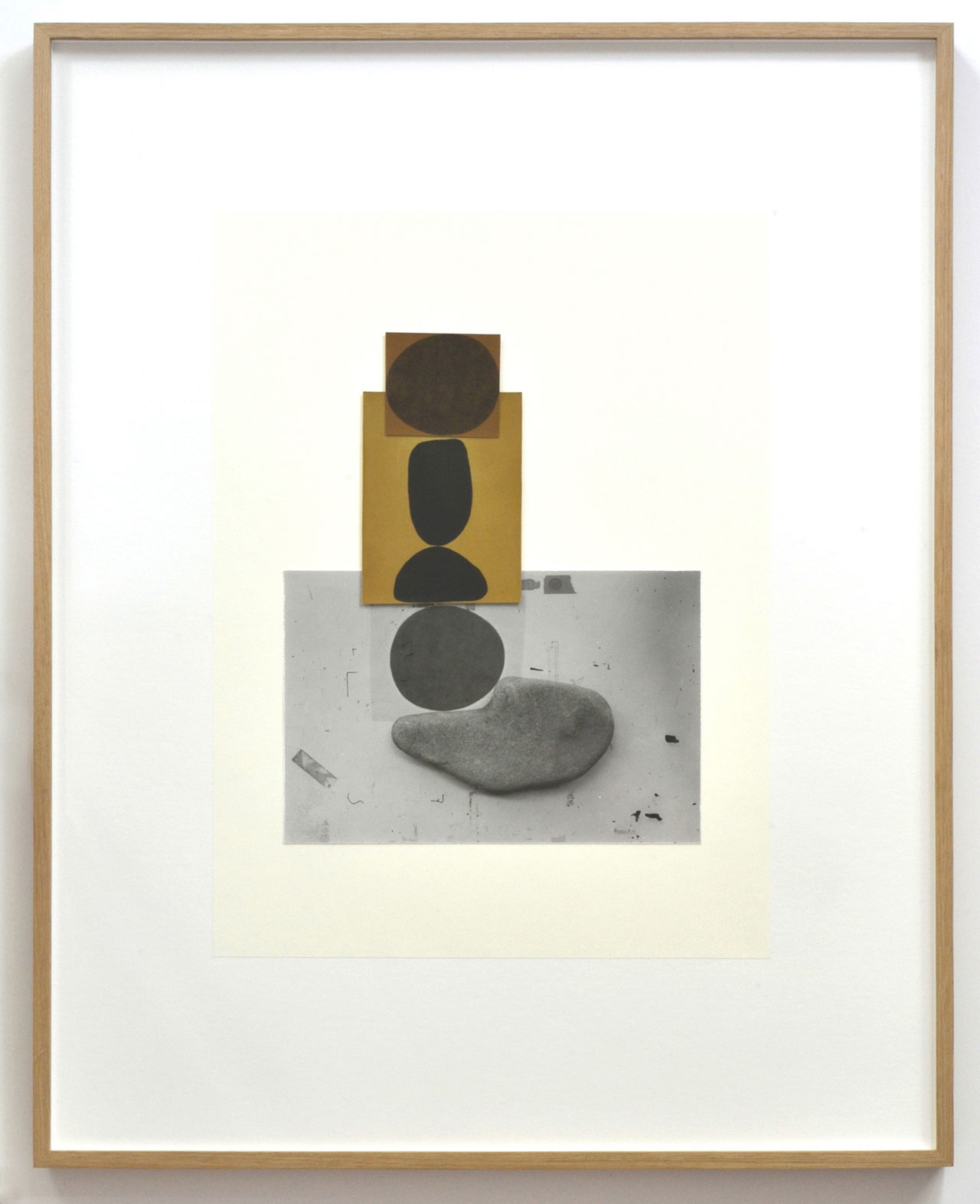
Babs Decruyenaere, Is It Possible to Build on Something That Is Lost?
Photo: Babs Decruyenaere
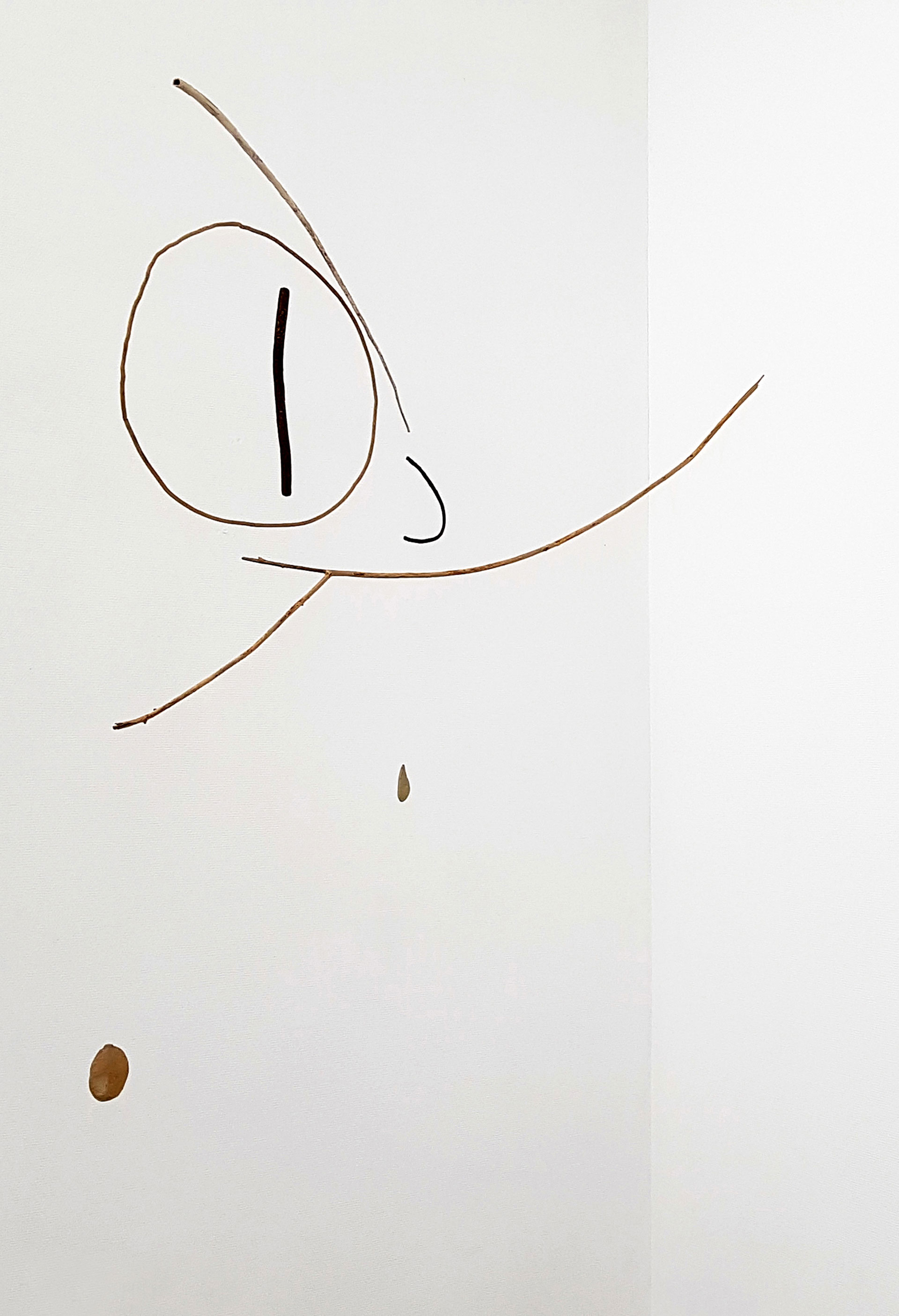
Babs Decruyenaere, Mobiel I
Photo: Babs Decruyenaere
At the core of both Willems and Decruyenaere’s practice is transforming what was once discarded or considered worthless – for Willems, pieces of paper, for Decruyenaere, pebbles and stones – into something beautiful and thus valuable. Just as important to both artists is the imposition of order on chaos and randomness, most obviously attested by Decruyenaere’s elaborate cataloguing of the found stones and pebbles that she uses for her minimalist sculptures. Meticulously photographed and categorized before they become part of a sculptural composition, the stones take on a second life as part of detailed documentation of their formal qualities.
Eschewing the use of a camera for a back-to-basics approach of analogue black and white photography based on camera obscura – a rudimentary process where the object is placed directly on the surface of a light-sensitive surface before exposing it to light – Decruyenaere’s photograms are as simplistic as the stones she has collected but at the same time represent elaborate studies on structure, line and motif. A similar dissonance can be found in her stone sculptures, whose minimal compositions belie rich figurative associations, while the display of Decruyenaere’s sketchbook showcases the wealth of the visual material that she has been creating and archiving for years.
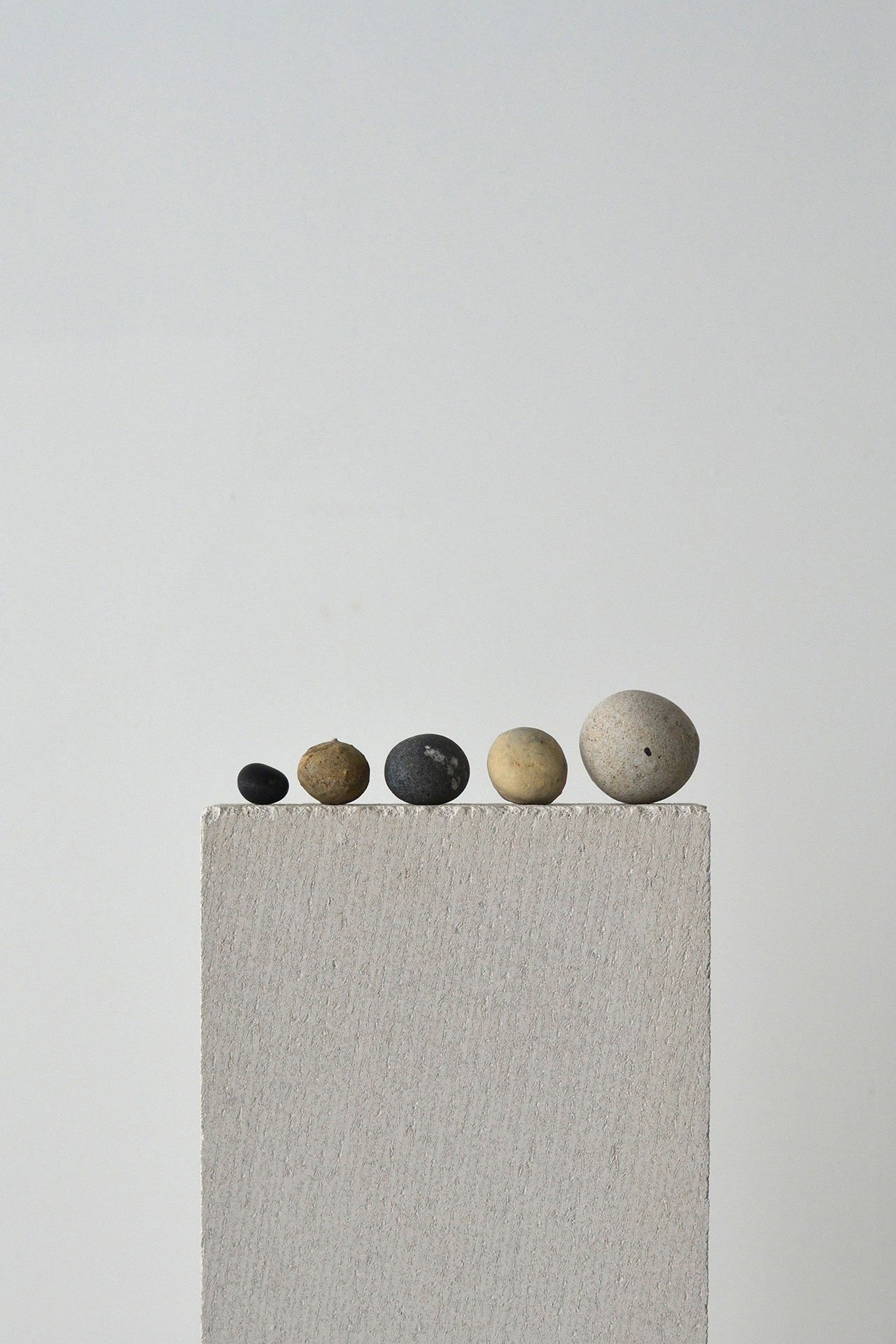
Babs Decruyenaere, Sculpture I
Photo: Babs Decruyenaere
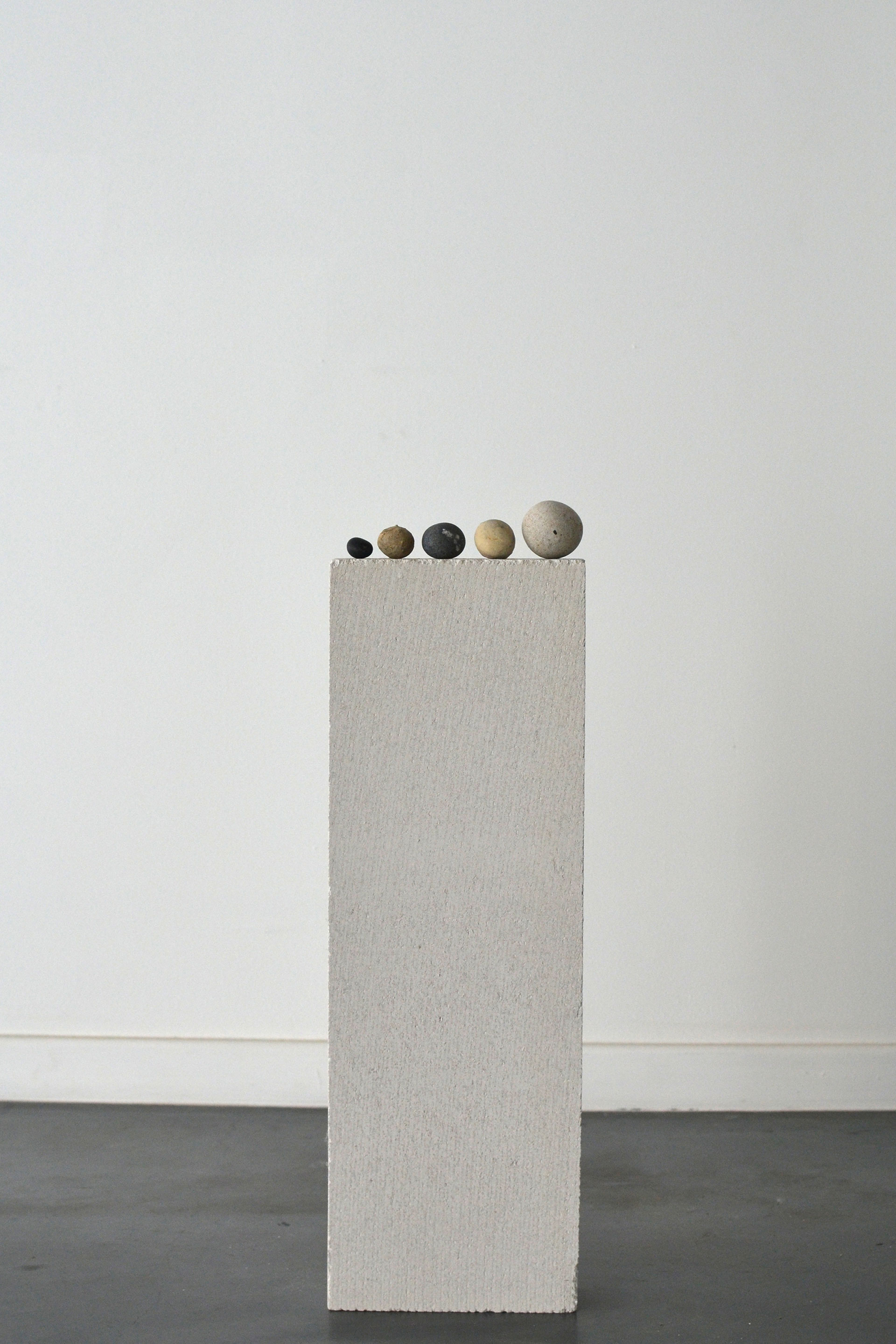
Babs Decruyenaere, Sculpture I
Photo: Babs Decruyenaere
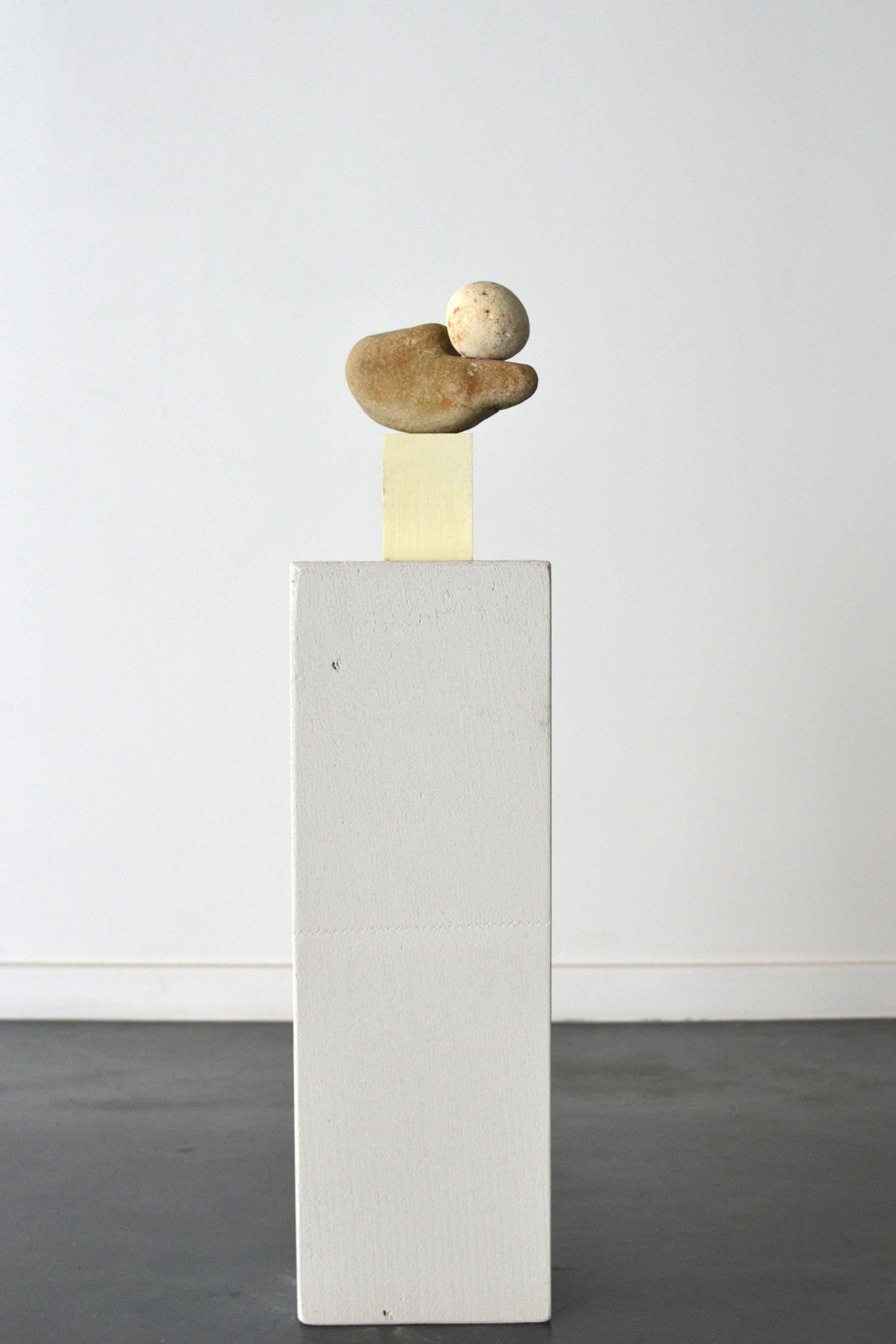
Babs Decruyenaere, Sculpture II
Photo: Babs Decruyenaere
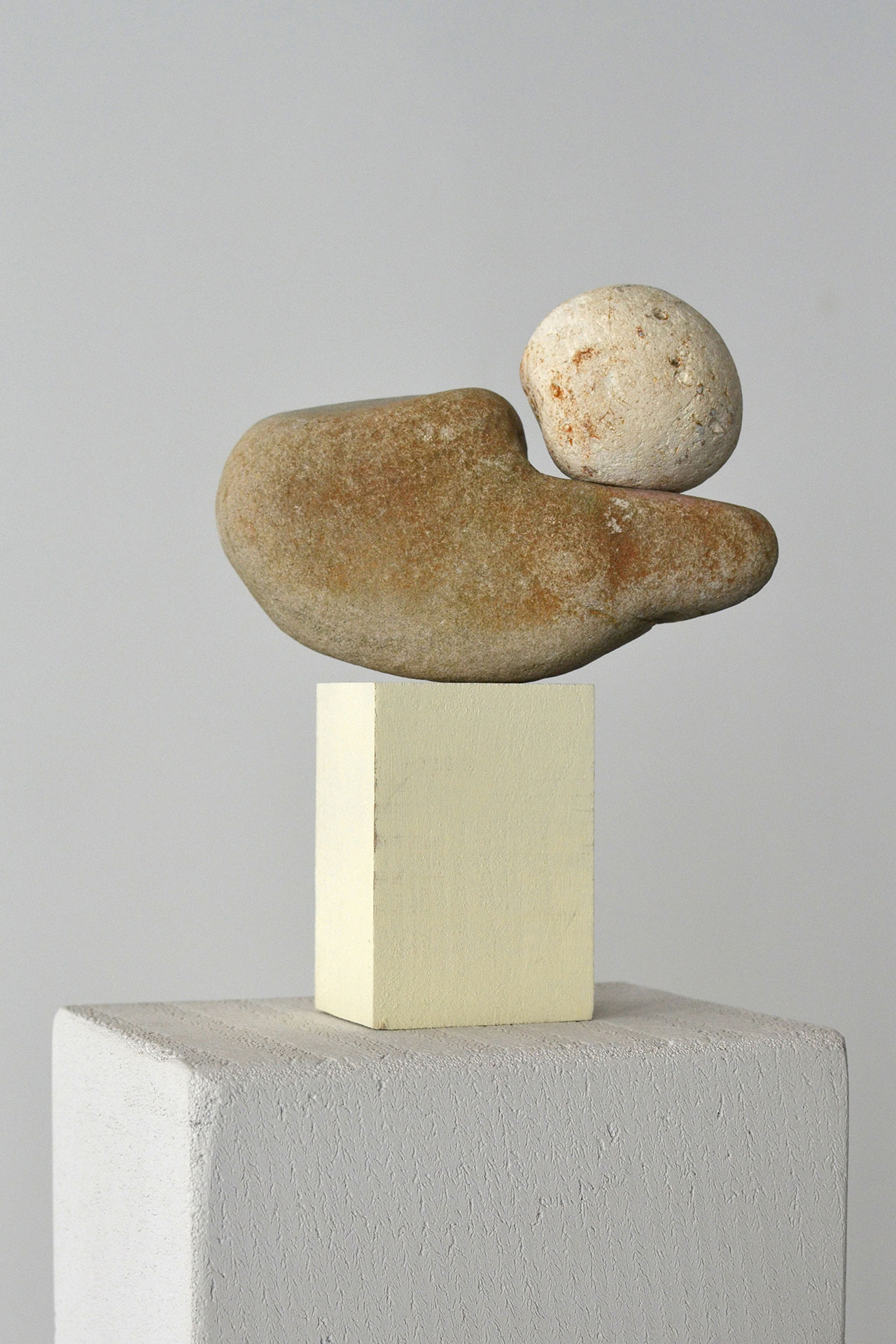
Babs Decruyenaere, Sculpture II
Photo: Babs Decruyenaere
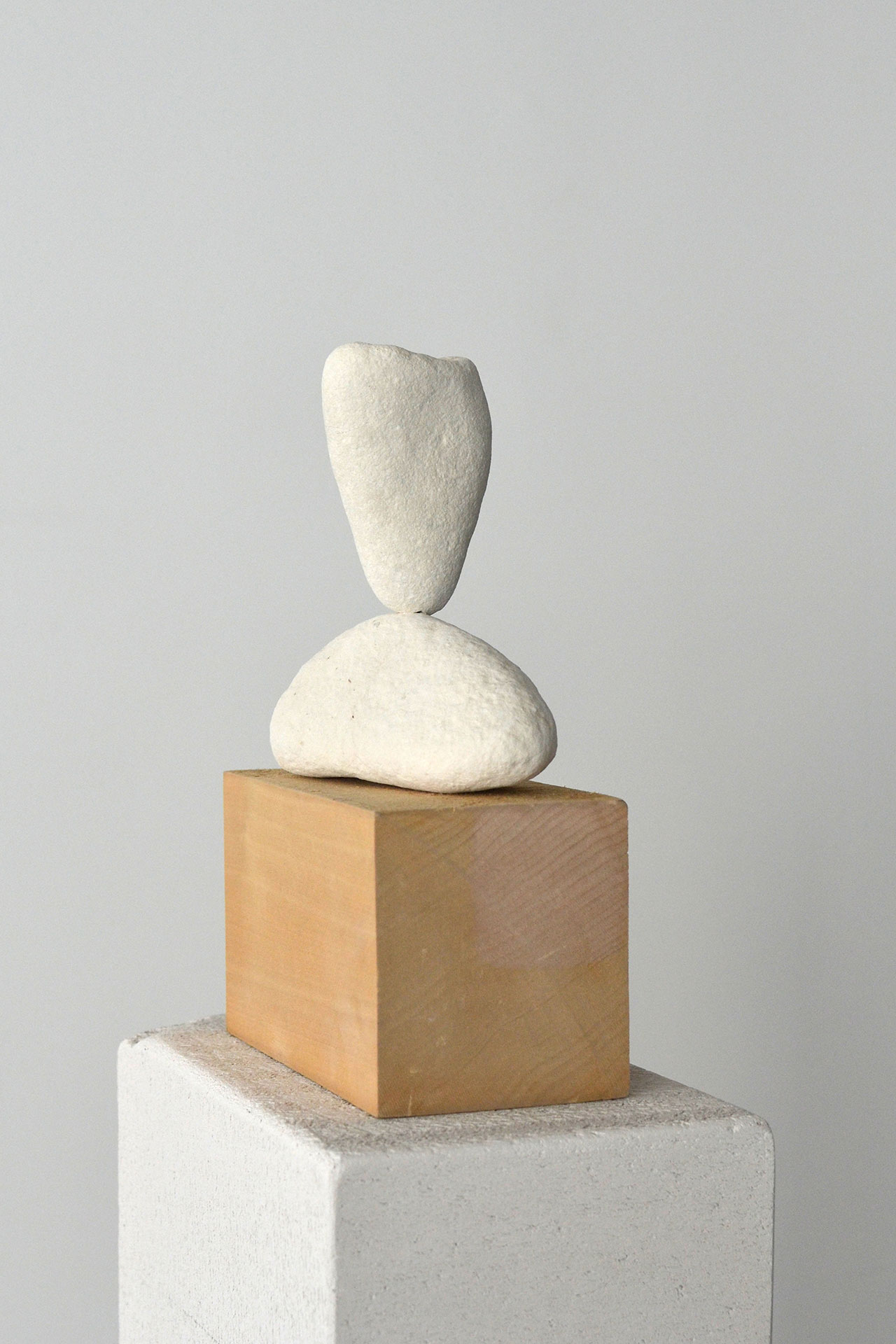
Babs Decruyenaere, Sculpture III
Photo: Babs Decruyenaere
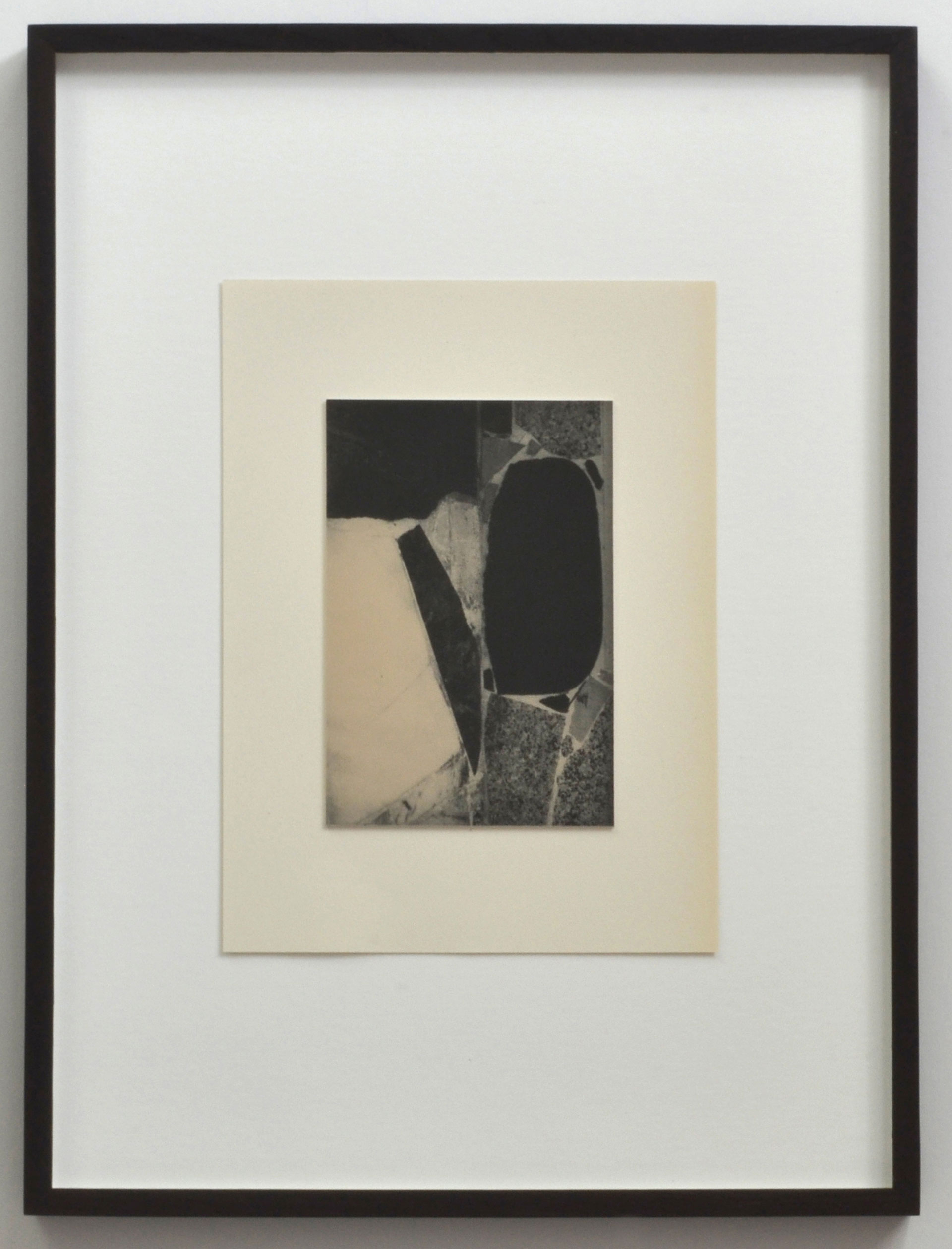
Babs Decruyenaere, The Wall
Photo: Babs Decruyenaere
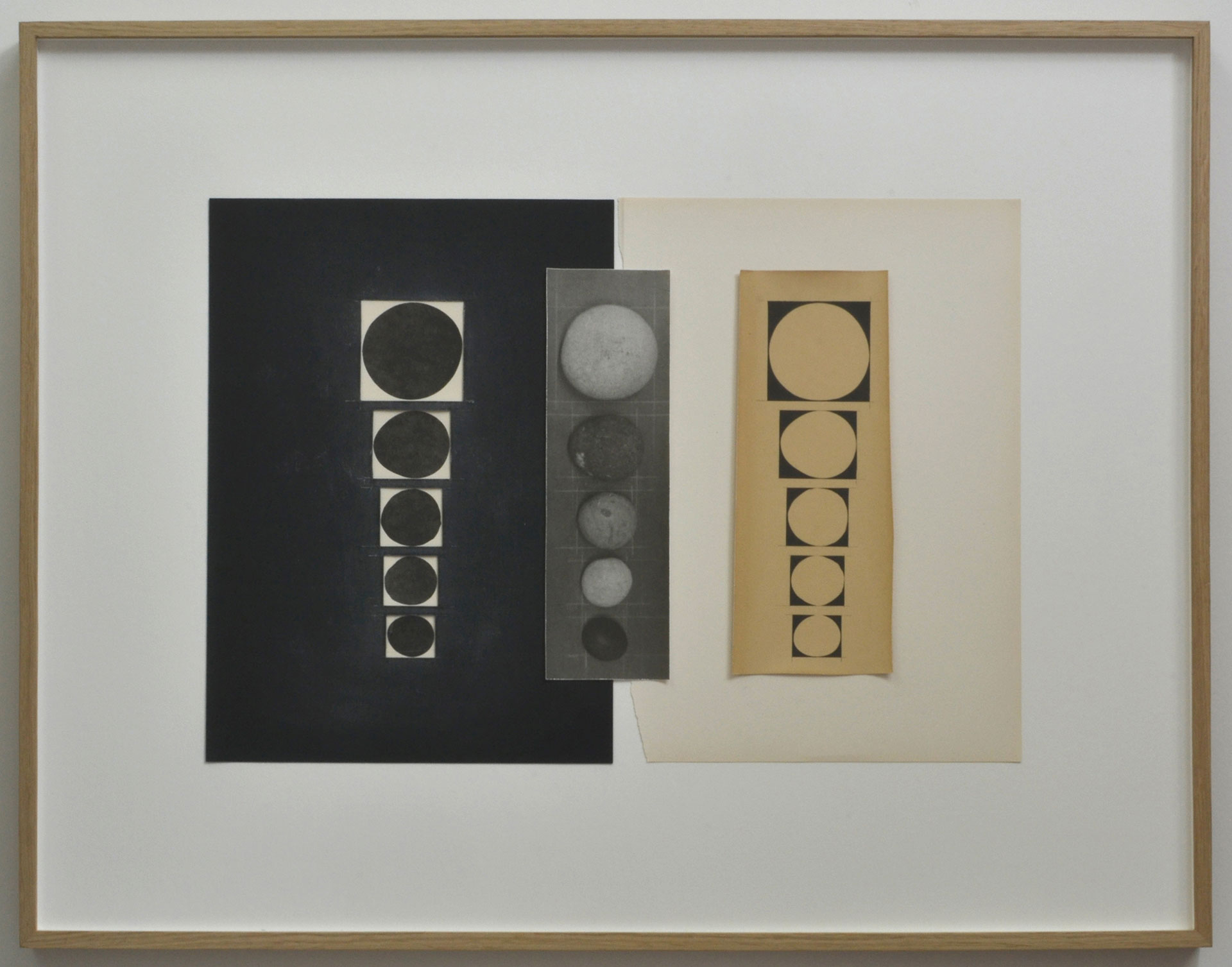
Babs Decruyenaere, There Is No Square Without a Circular Stone
Photo: Babs Decruyenaere
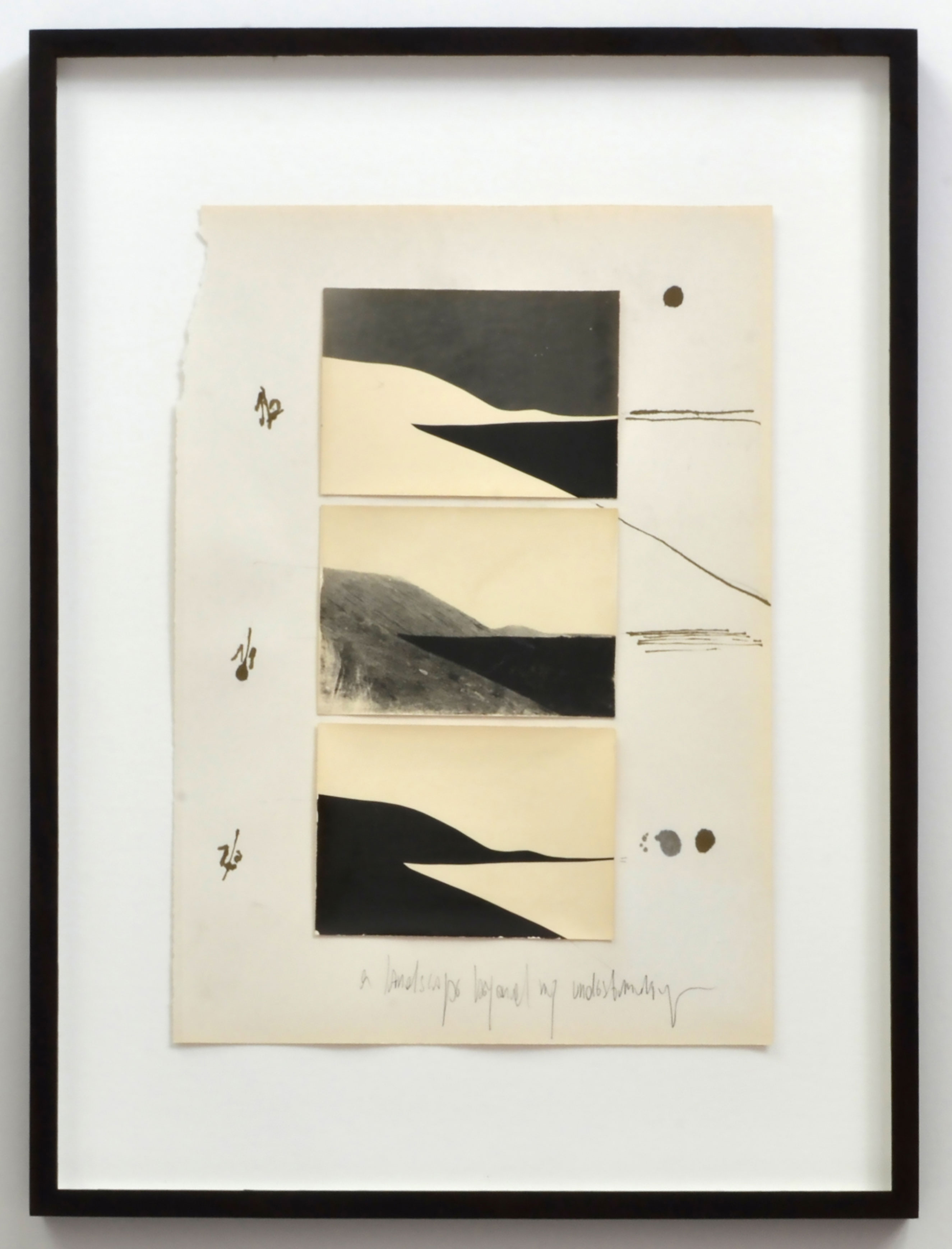
Babs Decruyenaere, Understanding the Landscape I
Photo: Babs Decruyenaere
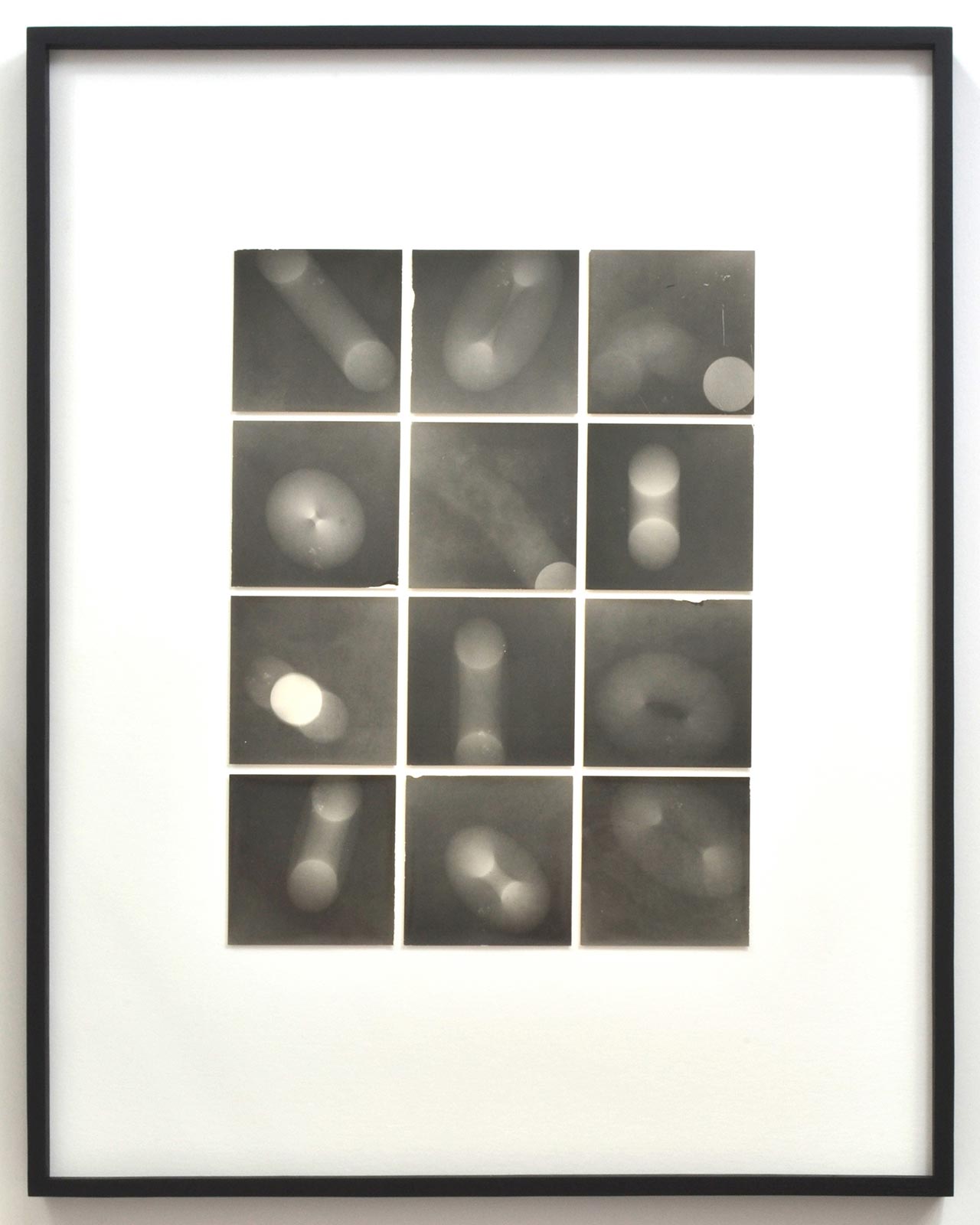
Babs Decruyenaere, When Something Moves in a Square...
Photo: Babs Decruyenaere
Whereas Decruyenaere explores the rich potential of humble stones, Willems is interested in the possibilities of discarded pieces of paper which he uses to create graphical collages based on the modernist language of geometric abstraction. The artist’s fascination with found paper can be traced to a collection of 800 vintage National Geographic magazines that his grandparents left him. Drawn to the 1950s photographs he discovered therein, he started scanning them, and looking for tiny abstractions which he then used to create collages. His recent work is based on items he finds in flea markets such as old photo albums whose coloured pages imbue some of his collages with vibrant accents. That’s not to say his monochromatic or muted-coloured pieces, often made with white paper sheets that have turned yellow, lack vigour, on the contrary, their toned-down chromatics belie bold graphic gestures and tactile playfulness.
What is captivating in examining the two artists’ work side by side is how similar they are in their fine-tuned abstraction and lyrical minimalism despite the differentiation in source materials. What seems, at first glance, to be abstract compositions actually belie figurative associations that trigger the imagination. In combination with the discarded materials that they are made of, in effect both artists’ work explores the boundaries between the figurative and the abstract in the context of everyday life, and highlights the beauty of the overlooked.
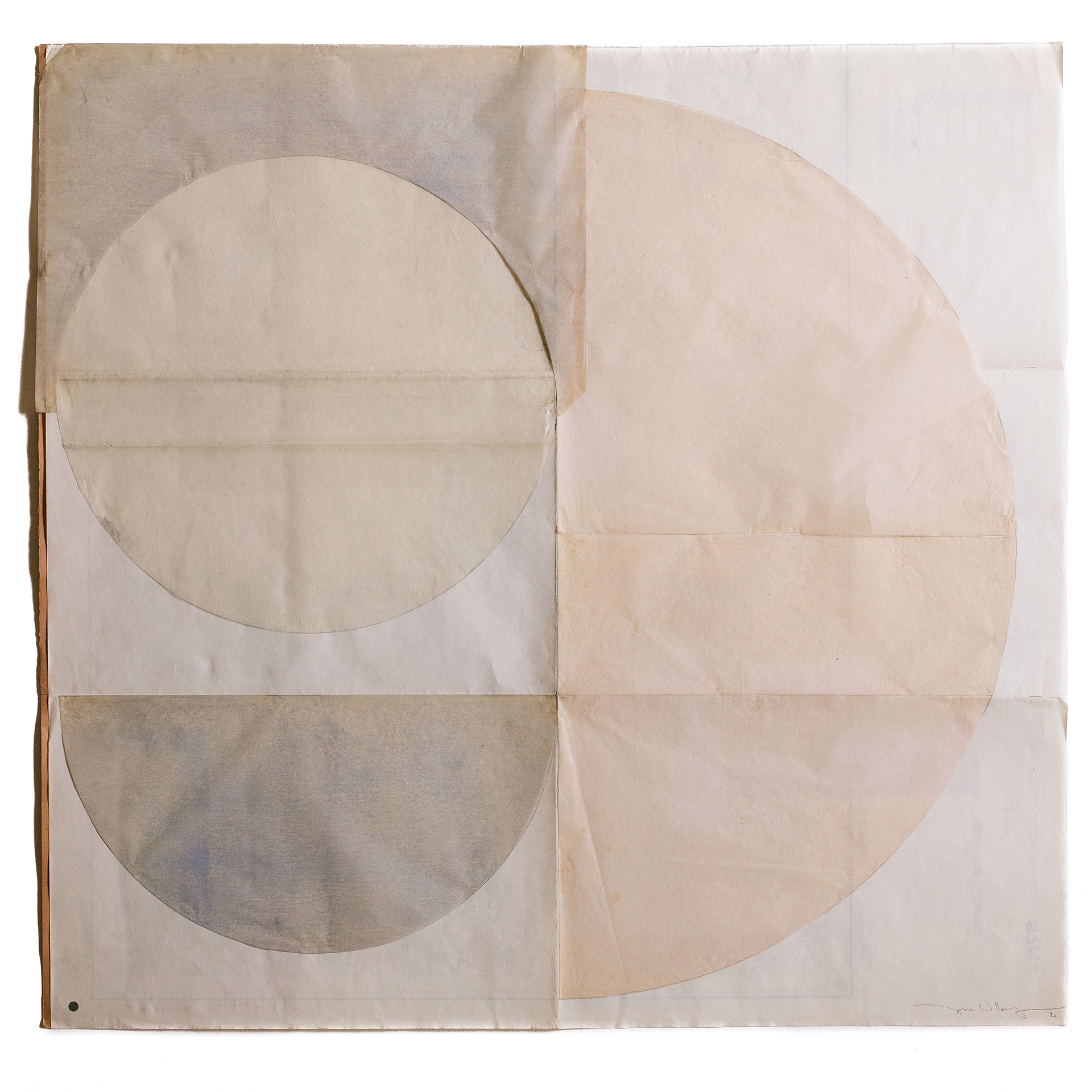
Jesse Willems, Lido
65x68cm
Photo: Jesse Willems
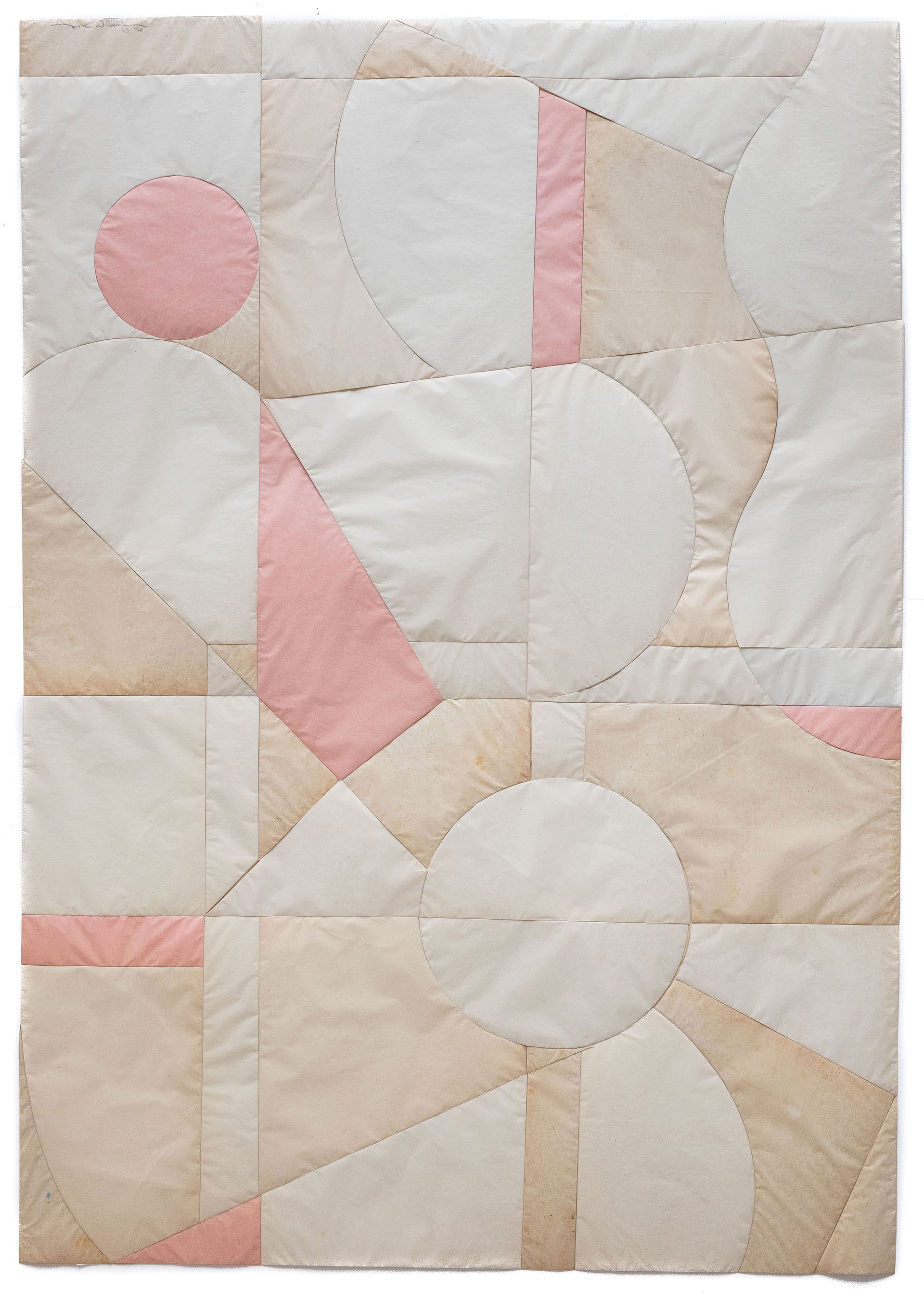
Jesse Willems, Tokyo Calypso
84x112cm
Photo: Jesse Willems
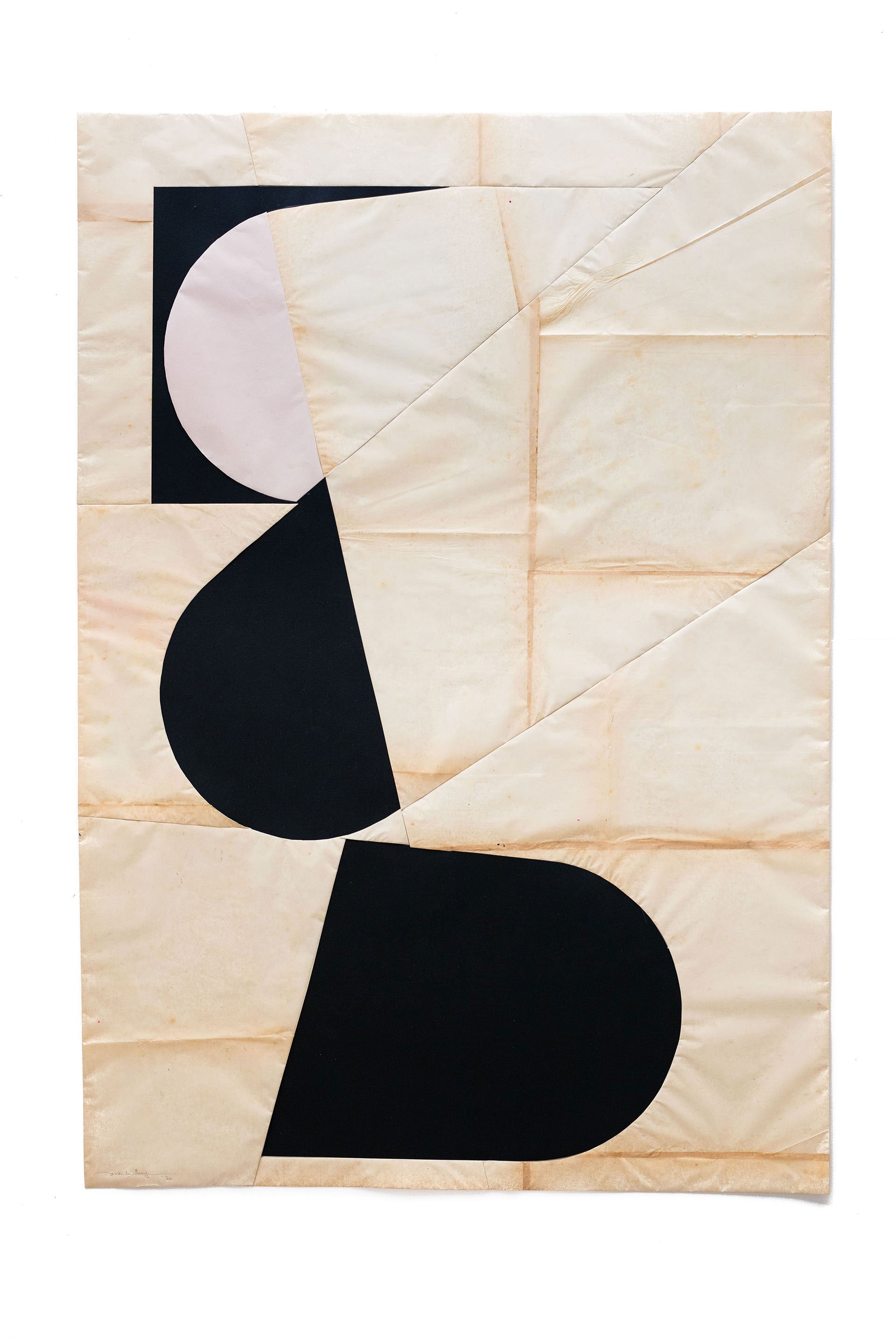
Jesse Willems, Loculus
84x112cm
Photo: Jesse Willems
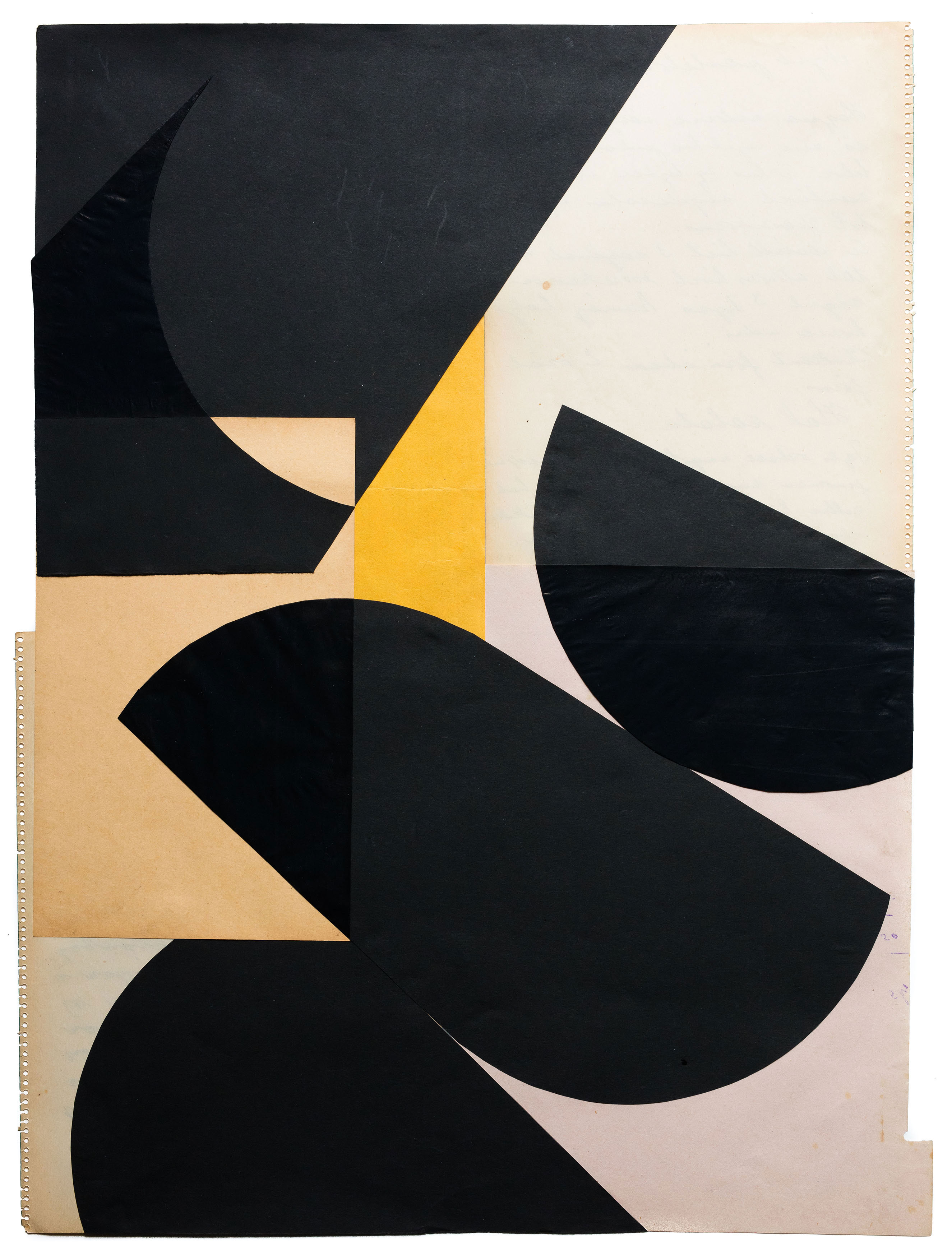
Jesse Willems, Shortage of Kings
58x46cm
Photo: Jesse Willems
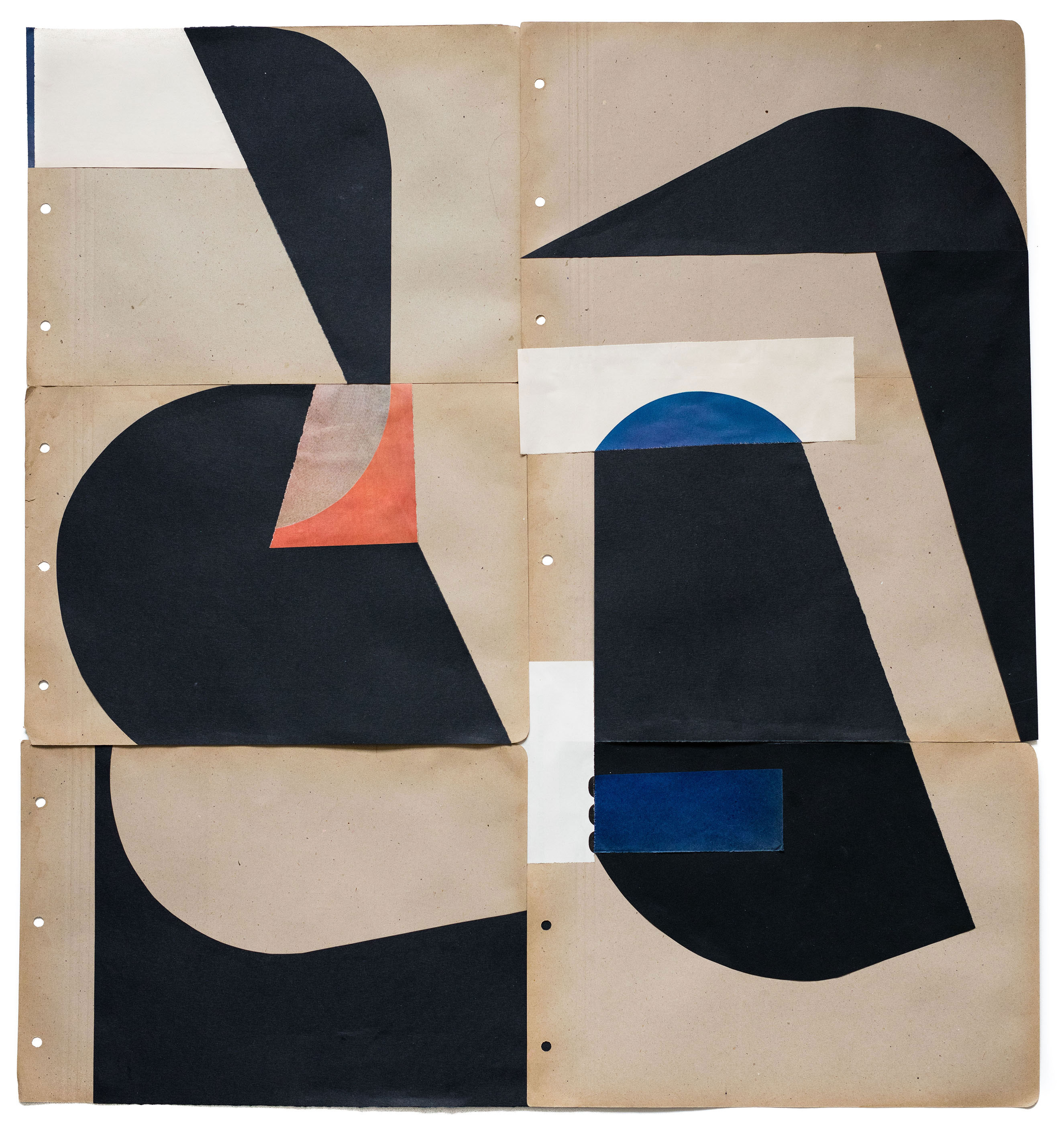
Jesse Willems, Straighten Up and Fly Right
69,5x74cm
Photo: Jesse Willems
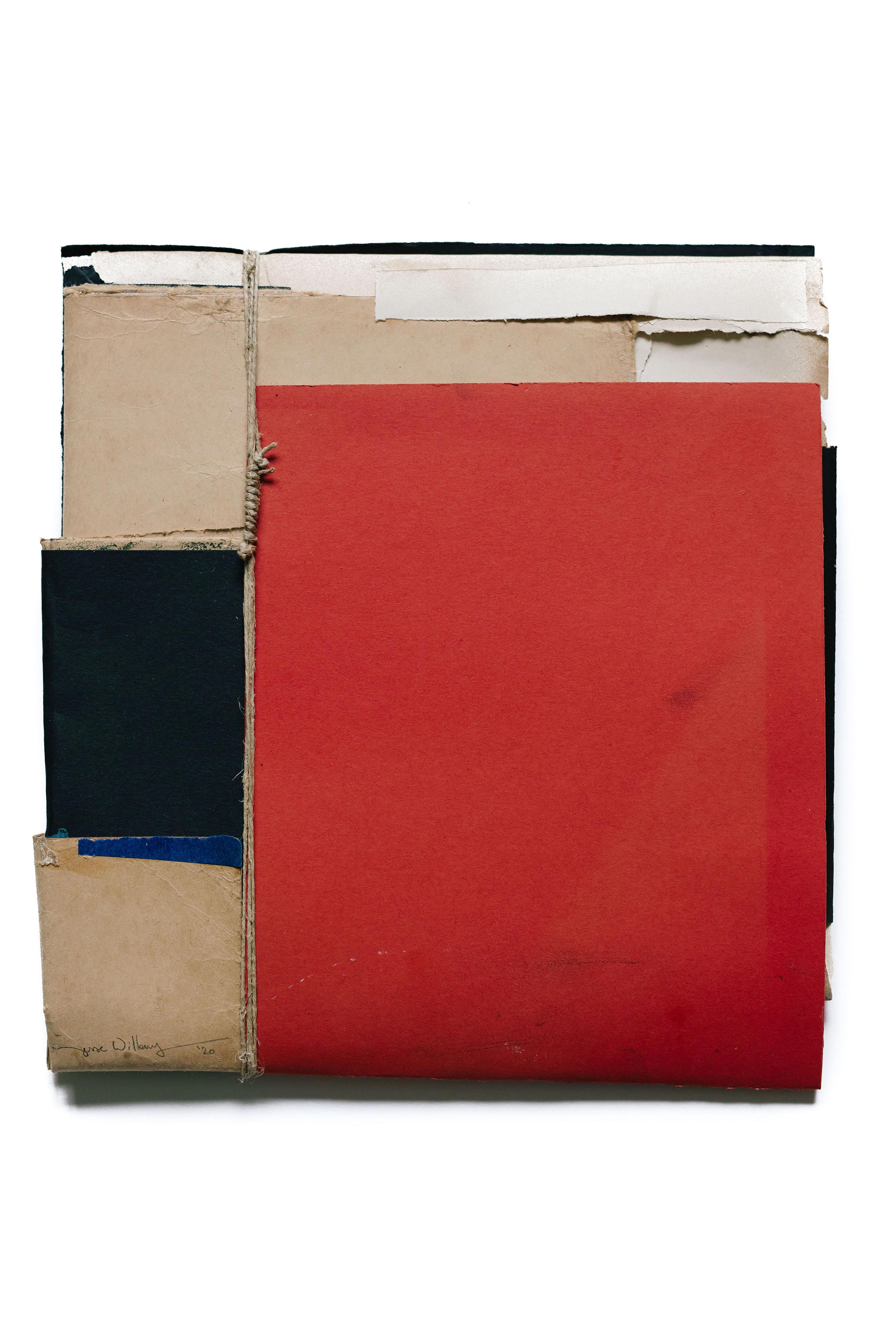
Jesse Willems, Old Flamboyance
37x45cm
Photo: Jesse Willems
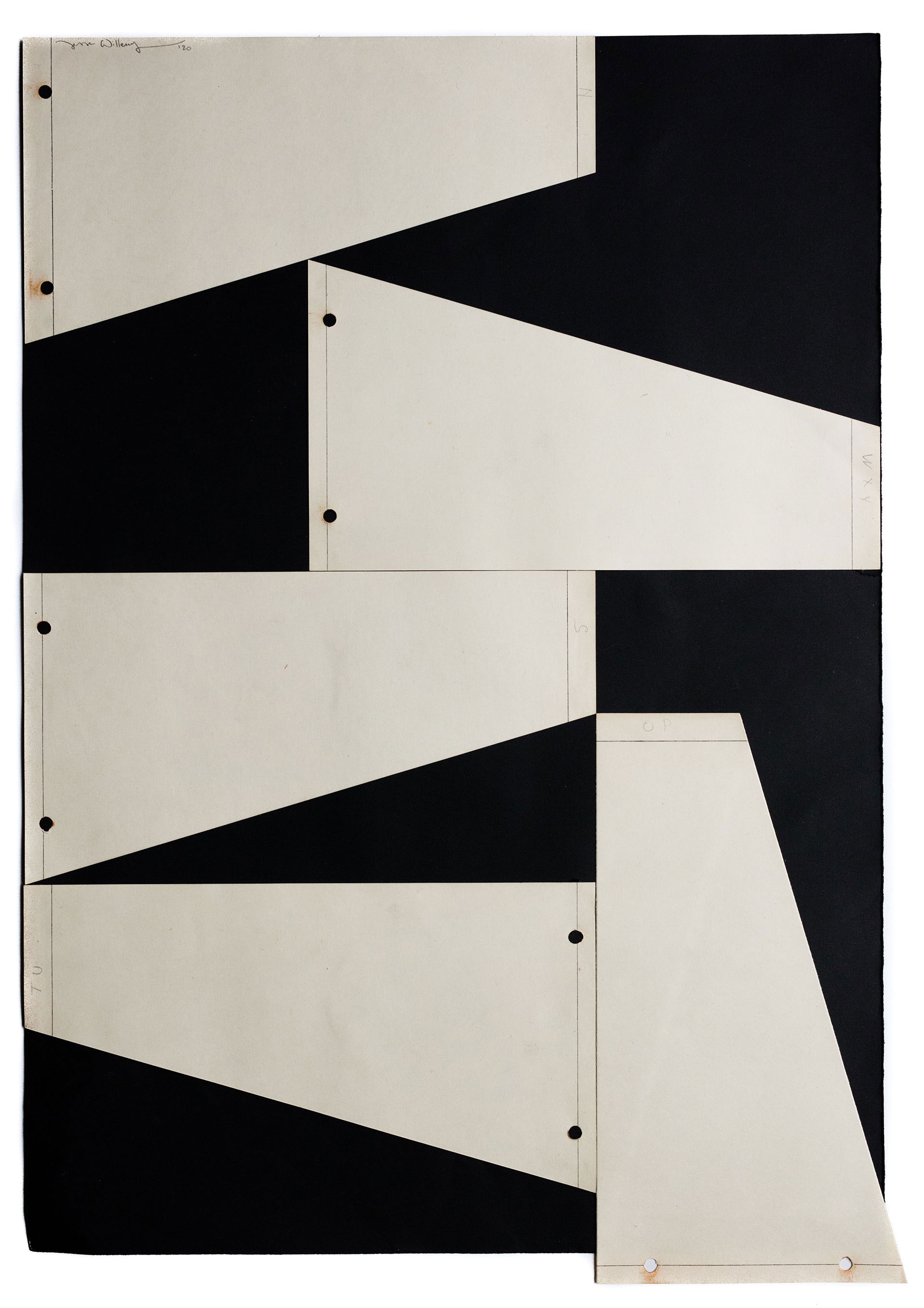
Jesse Willems, Vertex
63x48cm
Photo: Jesse Willems
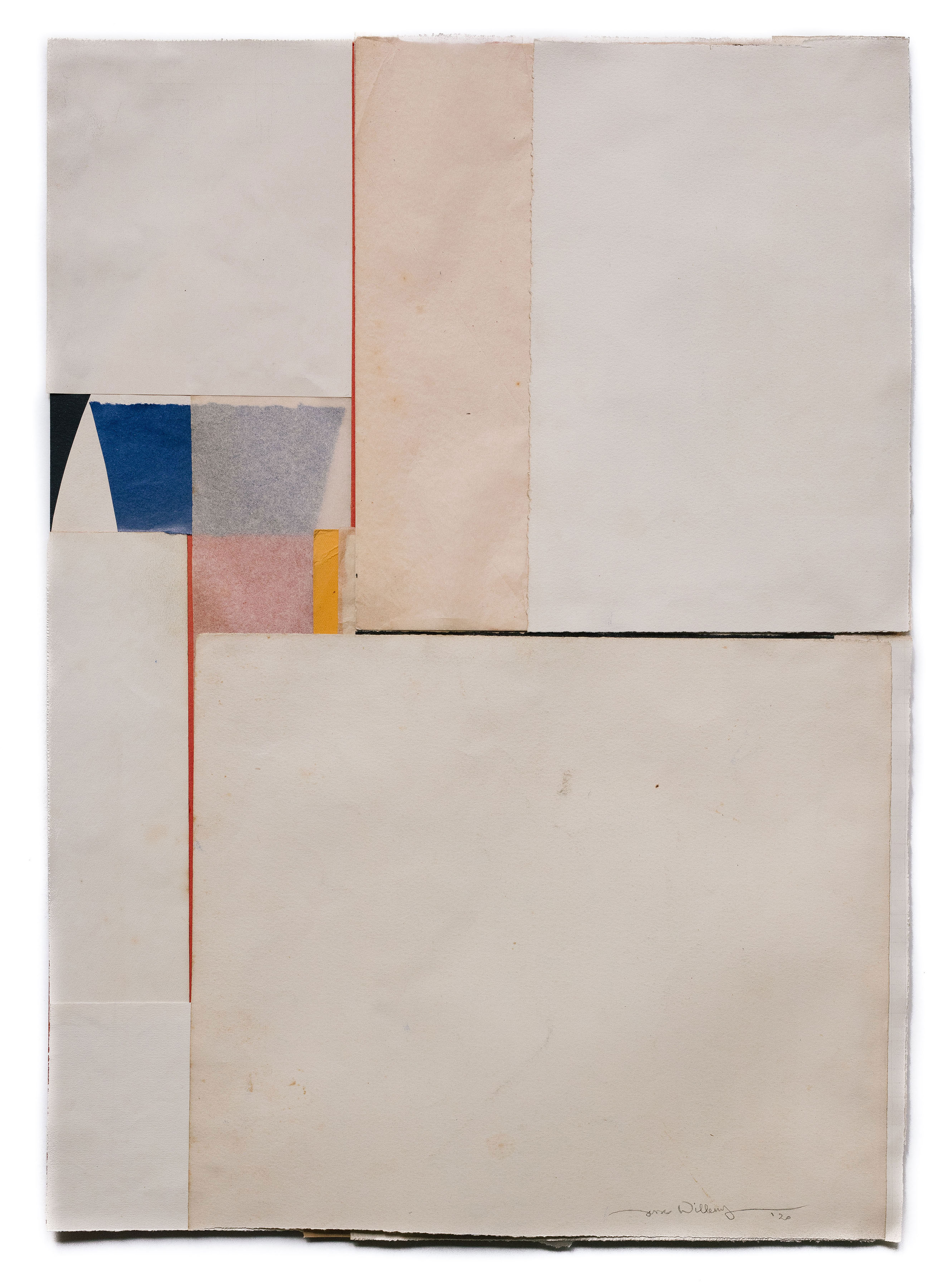
Jesse Willems, Ulysses
40x53cm
Photo: Jesse Willems
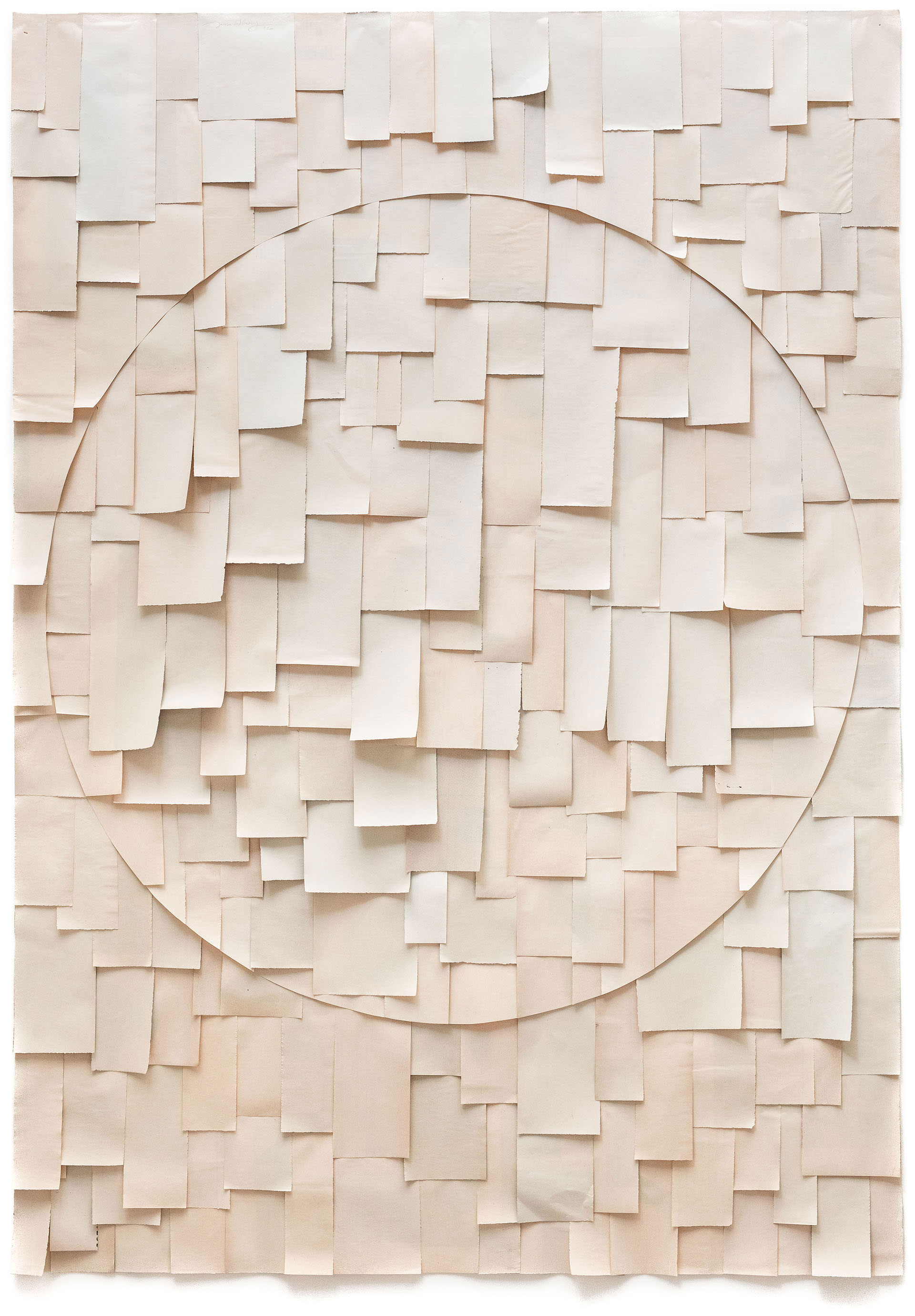
Jesse Willems, Busy Sunset of an Empire
84x112cm
Photo: Jesse Willems














